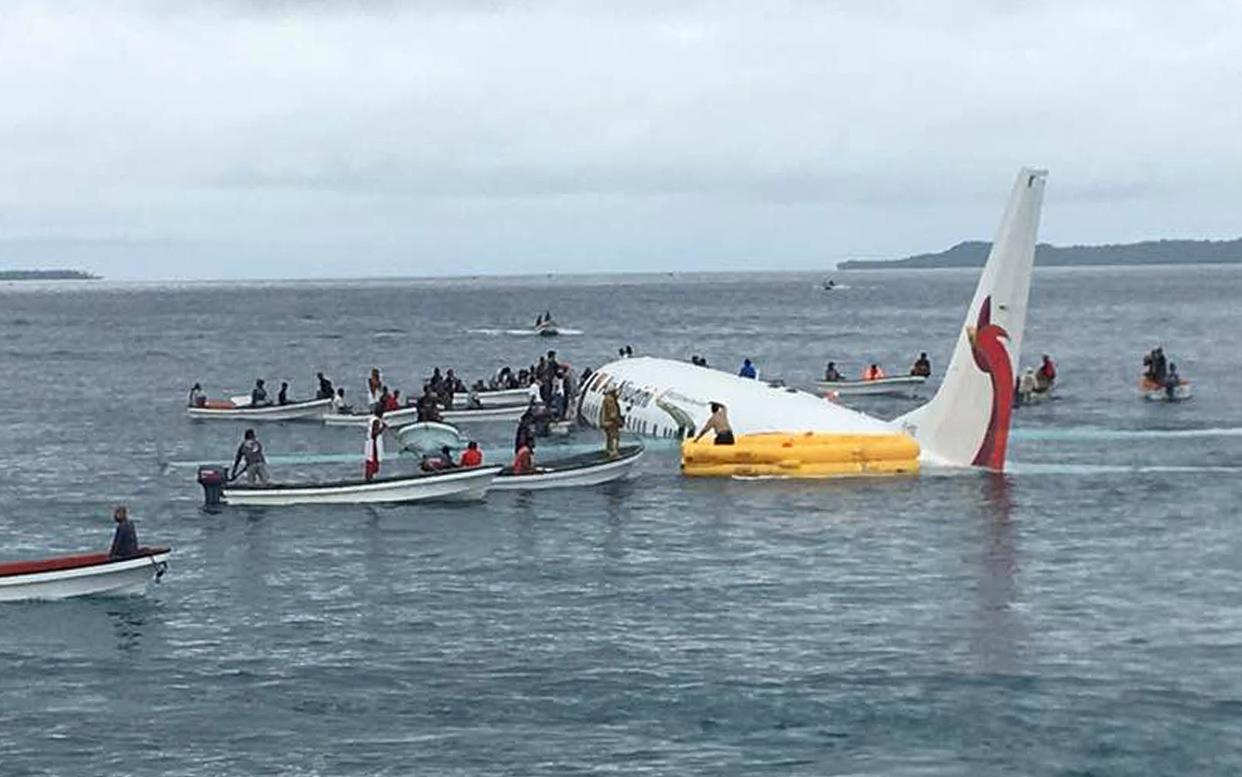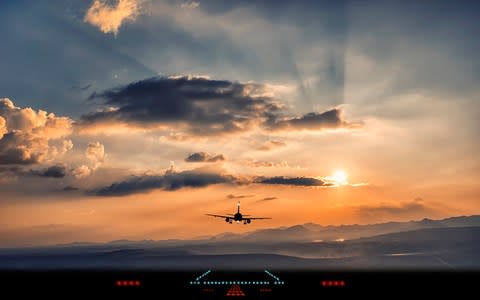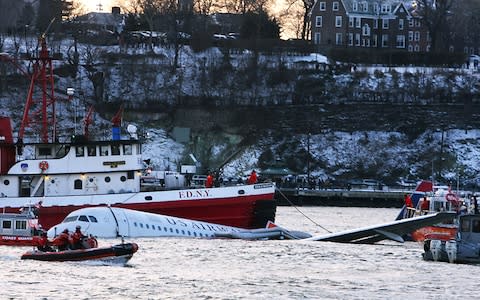How does a plane miss the runway in the age of automatic landings?

A passenger plane has come down in the sea near Chuuk International Airport in Micronesia after reportedly overshooting the runway.
Officials claim that none of the 35 passengers or 12 crew members were seriously hurt in the incident, though some were treated for minor injuries.
The Boeing 737-800, operated by Air Niugini from Papua New Guinea, was pictured floating in a shallow lagoon near the airport surrounded by rescue boats.
The cause of the crash is unclear but an investigation will follow.
What is Air Niugini?
The national airline of Papua New Guinea. Established in 1973, it serves 25 domestic destinations and 14 international destinations in 10 countries, including Australia, Singapore and Japan.
Air Niugini has an impressive safety record in that there has never been a fatal crash involving one its planes. However, a jet belonging to the airline was involved in a similar incident in 1995 when it aquaplaned off the runway at Papua New Guinea’s Madang Airport and into a ditch. The Fokker F-28 was a write-off, but all passengers survived.
There are currently 20 aircraft in Air Niugini’s fleet: three Boeing 737s (each between 13 and 19 years old), two Boeing 767s, eight Fokker 70s and seven Fokker 100s. The aircraft involved in today’s incident was one of the Boeing 737s, a model favoured by dozens of low-cost airlines around the world, including Ryanair.
Don’t planes use autoland?
Yes. Most modern planes are capable of landing themselves, although this still requires the pilot to do the hard work (it can be more onerous monitoring the auto-land than landing the plane manually).
Pilots typically use autoland when poor weather conditions restrict visibility, although it can be used at any time. An automatic landing is referred to as a Category III approach. “Pilots do not even have to see the runway before we touch down at airports such as Heathrow, where the facilities are advanced,” said Steve Allright, a BA captain.
Not all airports have Category III runways, however, and therefore can not support automatic landings.

How safe is a water landing?
“Although most modern airliners are not designed to take off and land on water, their design includes features to improve the chances of a successful emergency landing,” says aviation expert John Turner, Fellow of the Royal Aeronautical Society and director of the Honorary Company of Air Pilots.
“Any cabin air valves that would be under water following ditching – and therefore might let in water and sink the aircraft – can be closed by a switch on the flight deck.”
Though water landings are incredibly rare, the one that took place on the Hudson River in 2009 was hailed the “the most successful ditching in aviation history” by the National Transportation Safety Board (NTSB).
US Airways Flight 1549 struck a flock of Canada geese shortly after taking off from New York City’s LaGuardia Airport, causing the plane to lose all engine power.

The pilot, Chesley “Sully” Sullenberger III, safely landed the Airbus A320 in the Hudson River off Midtown Manhattan, an event that would become known as The Miracle on the Hudson.
All 155 passengers and crew survived the accident, which was later dramatised in the 2016 Clint Eastwood film Sully: Miracle On the Hudson, with Tom Hanks starring as the pilot.
There have been other less successful water landings. In 1970 an ALM flight from New York to St Maarten ran out of fuel following three landing attempts in adverse weather, and was forced to land in the Caribbean Sea. No announcement was made to instruct passengers to fasten their seatbelts and 20 of the 57 passengers died in the accident.
In 1996, a hijacked Ethiopian Airlines flight crashed into the ocean near the Comoros Islands after running out of fuel. The pilot had attempted a water landing while trying to fight off the hijackers. During the struggle, the plane was forced into a roll just before impact with the water, causing the craft to break into three pieces. Out of the 175 people on board, 125 died in the accident.
Is the landing the most dangerous part of a flight?
Yes. According to Boeing, which analysed worldwide commercial flights between 2007 and 2016, 48 per cent of all fatal accidents occur during a flight’s final descent and landing.
Nevertheless, travelling by plane has never been safer. According to the Aviation Safety Network (ASN), which records all air crashes and incidents globally, there were just 10 fatal accidents involving commercial flights last year, resulting in 44 deaths. Given that around 36.8 million passenger flights took to the sky last year, that works out at just one fatal accident for every 7.36 million departures.

